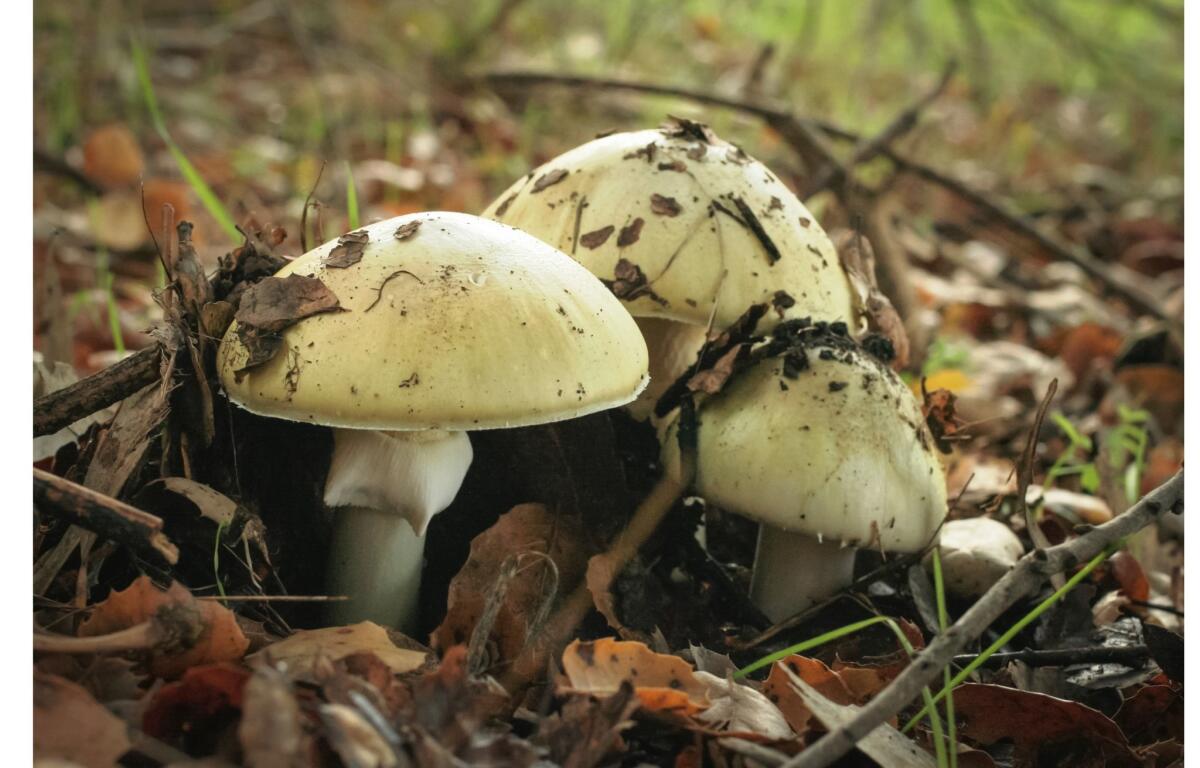Wild ‘death cap’ mushrooms poison 14 people in Northern California
The first signs of trouble came in November when a group of fungus hunters spotted a large bloom of wild “death cap” mushrooms in the greater San Francisco Bay area.
Over the following weeks, doctors treated 14 people who became severely ill after eating mushrooms foraged from rugged Northern California mountains. Three people needed liver transplants, including an 18-month-old girl.
Few details were known about the rare outbreak until Friday when doctors from across Northern California chronicled the sickness in the Centers for Disease Control and Prevention’s Morbidity and Mortality Weekly Report.
Poison control officials in California usually get just a few cases of mushroom poisoning each year, so the sudden outbreak alarmed medical officials, according to the report.
The ‘death cap’
Considered one of the world’s deadliest mushrooms, amanita phalloides produces a poisonous toxin that becomes volatile once it is absorbed in the gastrointestinal tract. The fungus’ toxin is responsible for more than 90% of mushroom poisoning deaths worldwide, according to the report.
In late 1996 and early 1997, two Northern California men died after eating the wild mushrooms.
After a mushroom cap is ingested, its toxins work swiftly to kill cells.
Patients become severely dehydrated. They suffer from diarrhea, vomiting and cramping. Their liver and other organs begin to fail.
But symptoms can be deceiving.
Some patients could be discharged from the hospital after their condition improves, only to return again with liver failure.
The poisonous mushroom usually flourishes in the fall and in rainy months.
That was case in Northern California: According to the report, the mushroom sprouted after a period of heavy rains and warm weather.
In California, the fungus, which does not have a distinct taste or smell, grows from coast live oaks and other trees.
It is easily mistaken for a nonpoisonous mushroom.

A meal of grilled mushrooms leads to liver transplants
The first case was reported in December when a 37-year-old man picked two wild mushrooms in Santa Rosa and cooked one of them.
About 10 hours after eating the mushroom, he began vomiting and had diarrhea and nausea. He was hospitalized for six days and received a battery of tests and medication.
Over the next two weeks, officials from the California Poison Control System saw a surge in mushroom poisoning cases. In every case, the patient had suffered from hepatotoxicity, a chemically driven injury that causes liver damage.
The mushrooms even were responsible for poisoning an entire household.
According to the report, a 26-year-old woman received wild mushrooms from someone who had picked them earlier in the day in the mountains. The woman claimed she didn’t know the person.
She later grilled the mushrooms for dinner and fed them to her husband, 18-month-old daughter, sister and a family friend.
About nine hours later, they began experiencing nausea, vomiting and diarrhea. They received intravenous fluids.
The child developed liver failure and eventually underwent a liver transplant. The toddler was hospitalized for 36 days and suffered permanent neurological impairment.
The woman’s 38-year-old sister also underwent a liver transplant.
Mushroom poisoning count grows
- A 36-year-old man was hospitalized after he ate mushrooms that were picked by a friend during a hike.
- A 56-year-old man underwent a liver transplant after he ate mushrooms that had been foraged.
- An 86-year-old woman and a 93-year-old woman became ill after they ate wild mushrooms picked by a friend.
- Four men between the ages of 19 and 22 suffered liver damage after they ate what they thought were psychedelic mushrooms.
To forage or not?
The reports suggest that people use caution when considering mushroom picking.
Mushrooms should always be examined by an experienced mycologist, a person who studies fungi.
“Inexperienced foragers should be strongly discouraged from eating any wild mushrooms,” the report notes.
Health care professionals and scientists are conducting a clinical trial in the U.S. of a possible antidote for the mushroom poison. The antidote, intravenous silibinin, is licensed in Europe.
Sign up for Essential California
The most important California stories and recommendations in your inbox every morning.
You may occasionally receive promotional content from the Los Angeles Times.







